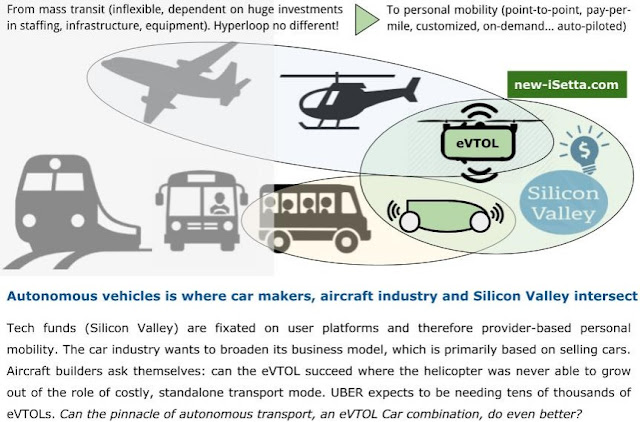@lolachampcar, there is more than one kind of experimental aircraft as far as the FAA is concerned. Experimental Amateur Built (EAB, Homebuilt, etc...) are just the most common and. An experimental aircraft is simply one that hasn't cone through the FAA certification process and been granted a type certificate. There is an FAA Order that the person completing the airworthiness inspection works through to build up the Operating Limitations for a specific aircraft. The main types of Experimental aircraft include:
Experimental Amateur Built - This is the most well known (thanks to the EAA - Experimental Aircraft Association) subset of Experimental aircraft and what most people are talking about when just saying Experimental Aircraft. This is applicable where 51% of the construction tasks were completed for recreational and/or entertainment purposes. This has the Phase 1 and Phase 2 as part of the operating limitations. During Phase 1 flight testing, you are limited to a certain flight area (at one point, this was 25 mile radius to the local airport, but with faster aircraft, you can typically get much larger flight test areas) and are unable to carry passengers. The Phase 1 period typically lasts 25 or 40 flight hours. 25 hours is allowed for aircraft that use and engine/propeller combination that is used on a certified aircraft, where 40 hours is required otherwise. Once you've completed the required flight hours, the restrictions on EAB boil down to: not overflying populated areas except for takeoff/landing and no carrying of persons/property for hire. You can get waivers on the 2nd restriction if you want to conduct transition training in your EAB aircraft. The FAA sees the value in aircraft-specific training, so you can do that, with some added paperwork. In recent years, the FAA cracked down on companies that REQUIRED you to come to the factory to "quick-build" your kit and were using the EAB rules to try and skirt the certification rules. Technically, you completed 51% of the tasks, but with the factory assist program being the only option, they weren't really amateur built, which means they weren't able to qualify for this type of airworthiness certificate.
Experimental Research and Development - This is used for a company doing flight testing on a new design that is currently under development. It's also used if your company is testing changes to an existing model of aircraft. As far as I know, this always has a required crew member clause listed in the Operating Limitations. This is generally limited to something that you intend to certify.
Experimental Market Survey - Have an airplane that is under development and you want to take potential passengers for a ride? This is the category for you. A perfect example if this is N58VA. This is owned by Van's Aircraft, but is used to give demo rides to potential kit builders. If you and I built it, the airplane would be EAB. Since the company built it, it isn't eligible for EAB (commercial endeavor, not entertainment/education). Registering it as Experimental Market Survey
Experimental Race - Wanna take a stock P-51 Mustang, clip the wings, chop the canopy down, and add other modifications to reduce drag and make it go faster at the Reno air races? This is the category for you. As far as I know, these always have a required crew member clause listed in the Operating Limitations. Some of the high-performance gliders that come from Europe get registered here.
Experimental Exhibition - Many air show planes are in this category. They tend to be one-off designs, or at least major modifications to existing designs, so it would never be profitable to try and make it through certification using the R&D category. This allows commercial entities the freedom to come up with stuff like the Jet Waco, where you take a biplane with a big radial engine on it and strap an even bigger jet engine on the bottom of it and get a non-military airplane that can accelerate straight up. N2369Q is the N number for the Jet Waco. Again, these likely always have a required crew member clause listed in the Operating Limitations. In the case of the Jet Waco, the person doing the wing walking is a required crew member since the point of the air show performance is to have someone walking on the wing.
It's difficult to tell, but Race/Exhibition may always be used together. The ones I've found in the FAA N-number database are all listed as both Race and Exhibition on the category
So, Experimental is the top level airworthiness classification that just says the aircraft doesn't have a Standard airworthiness certificate. The specific use-case determines which airworthiness category it's in and thus the types of restrictions that are put in the operating limitations. The Operating Limitations are generated by the inspector during the initial inspection and must be carried in the airplane on every flight. The same document is registered with the FAA when all the airworthiness paperwork is submitted. For specific reasons, one could have items normally included in the operating limitations removed for a specific aircraft.
None of these apply to something like the Pipistrel Alpha/Taurus Electro where it's a company selling a fully-constructed electric powered aircraft that someone wants to use to conduct flight training (carrying passengers for hire). The gas-powered Alpha and Taurus are certified using the LSA (Light Sport Aircraft) rules that are totally different than the standard certification rules that someone like Cessna used on the Cessna 172. The LSA rules currently only allow reciprocating engines for power, so the battery/electric version of the airplane isn't currently eligible for an LSA airworthiness certificate. That means you go into one of the Experimental categories other than EAB since it's fully assembled. That means you deal with the limitations imposed by the specific category under Experimental.
Give it a few years and this should be straightened out.



